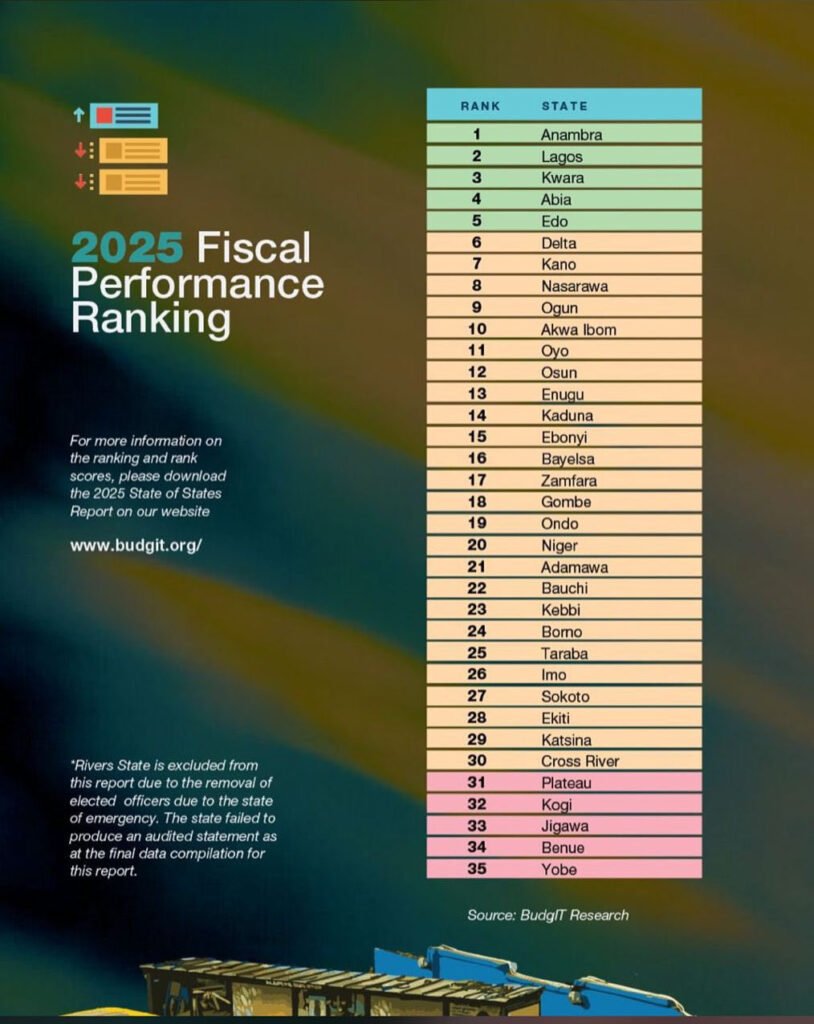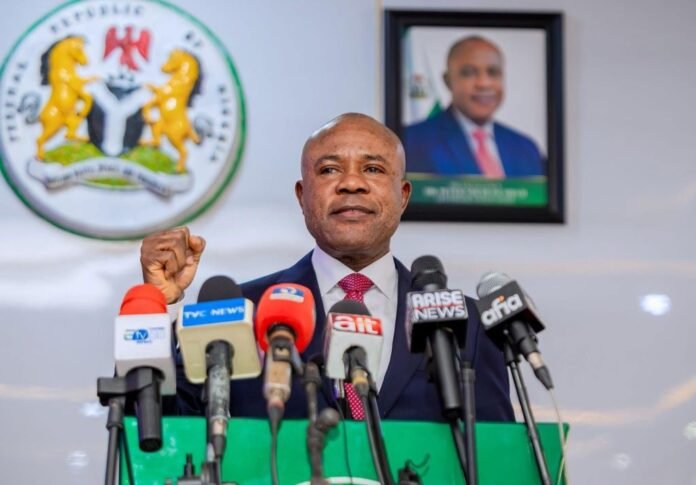Nigeria’s subnational debt has risen to ₦10.57 trillion, marking a 6.8% increase from ₦9.89 trillion in 2023, according to the 2025 State of States report released by BudgIT on Tuesday.
The civic-tech organisation’s landmark 10th edition — themed “A Decade of Subnational Fiscal Analysis: Growth, Decline and Middling Performance” — provides a sweeping overview of how Nigeria’s 36 states are managing public finance amid record federal allocations, uneven IGR growth, and widening fiscal inequality.
The report shows that total subnational debt grew modestly this year, a slower pace than the 36% jump recorded in 2023. Still, at ₦10.57 trillion, state-level debt now represents a growing share of Nigeria’s public liability.
Encouragingly, 31 states reduced their domestic debt by at least ₦10 billion, with Lagos, Cross River, and Delta each slashing over ₦100 billion.
Foreign debt also fell by over $200 million, led by Lagos, Enugu, and Gombe. Yet, Lagos remains Nigeria’s most indebted state externally, holding $1.17 billion, or more than a quarter of total subnational foreign debt.
The top five debtor states — Lagos, Kaduna, Edo, Ogun, and Bauchi — together account for over 50% of all state-level borrowing.
Enugu Takes Fiscal Crown, Anambra Rises
In a major turnaround, Anambra State emerged as Nigeria’s most fiscally sustainable state in 2025, moving from second position in 2024.
It is followed by Lagos, Kwara, Abia, and Edo, while Enugu achieved a remarkable milestone: the only state in the federation capable of funding its operations entirely from internally generated revenue.
BudgIT’s Index A — which measures states’ ability to meet operating expenses without federal allocations — ranked Enugu first, scoring 146.68%, followed by Lagos at 120.87%.

“States that perform strongly on this index have greater viability if they were to exist independently,” the report explained.
Governor Peter Mbah’s administration in Enugu received particular praise for scaling the state’s IGR from ₦30 billion in 2023 to ₦180 billion in 2024, through digital tax collection reforms and broader revenue expansion.
Meanwhile, Rivers, missing from this year’s ranking due to data inaccessibility following its state of emergency, had previously been a consistent top performer.
Fiscal Inequality Deepens
BudgIT’s data reveal a growing fiscal divide. While Lagos averaged ₦541 billion in IGR over the past decade, the combined average of Adamawa, Gombe, Taraba, Kebbi, and Yobe barely reached ₦41 billion.
Only five states — Abia, Anambra, Kwara, Ogun, and Edo — generated at least half of their recurrent expenditure internally. In contrast, 14 states now need more than five times their IGR to fund their operations — more than double last year’s number.
The report notes that 28 states rely on federal allocations for over 55% of their total revenue, while 21 states depend on it for more than 70%, underscoring Nigeria’s deeply centralised fiscal system.
Between 2022 and 2024, subnational recurrent revenue more than doubled from ₦6.6 trillion to ₦14.4 trillion — driven largely by record FAAC inflows.
“Fiscal sustainability requires that states look inward—improving revenue systems, cutting waste, and prioritising infrastructure and human capital that deliver long-term value,” said Vahyala Kwaga, BudgIT’s Head of Research.
Infrastructure, Health, and Education Spending
The report also highlighted a renewed focus on capital projects. With Rivers excluded, Abia State topped the list by dedicating 77% of its total spending to infrastructure. Anambra, Enugu, Ebonyi, and Taraba also exceeded 70%.
On social investment, states collectively budgeted ₦2.41 trillion for education but spent only 66.9%, while health budgets saw 61.9% implementation.
Edo, Delta, and Katsina were the only states to exceed their education budgets, with average per capita education spending at ₦6,981, and per capita health spending at ₦3,483.
After a decade of fiscal benchmarking, BudgIT is urging Nigerians to demand stronger transparency, accountability, and citizen participation.
“The State of States has always meant more than rankings,” BudgIT said. “It’s about giving citizens the evidence to hold leaders accountable and ensuring fiscal health translates into real life improvements.”
Which state do you think is managing its finances best — Enugu, Anambra, or Lagos? Drop your thoughts in the comment section and join the conversation on how Nigeria’s states can build real fiscal independence.
Rate, Like 👍, Comment 💬, Share this article, Follow us on our social media handles, and Submit your own story to get featured and earn rewards!







